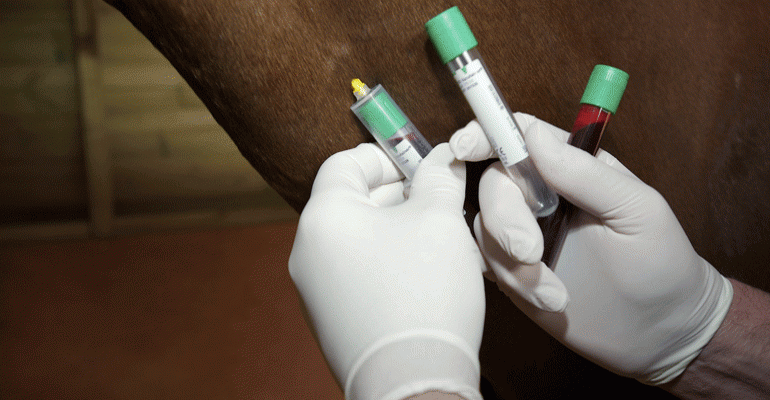EHV viruses (Herpes viruses) are a concern for horse owners worldwide. They are highly contagious viruses that can have major consequences. Three German researchers investigated the way these viruses spread. This turned out not only to go directly through blood and aerosols, but also through objects and feces.
–
There are different types of EHV viruses that all cause different complaints. Of these, the most famous and feared virus is EHV-1, also known as Rhino. The complaints of this vary from cold complaints to neurological symptoms and the abortion variant. International competitive sport is currently experiencing the consequences of Rhino outbreaks at competitions in Spain.
According to the researchers, there is growing evidence that environmental transmission plays a role. This concerns contamination via the air, water and contaminated objects. However, this does not apply to all Herpes viruses. Evidence of environmental contamination has mainly been found in EHV-1, EHV-5 and EHV-7.
“Direct contact with infected horses and exposure to aerosols are the most well-known and direct means of contamination. There is also often direct contamination via placenta and other secretions from the uterus, ”says the team. In addition, the viruses also remain on various objects for a longer period of time. Think of wood, straw and the horse fur itself. As a result, the virus spreads easily.
The fact that the viruses remain contagious on various objects for a longer period of time poses particular risks to horses in captivity. These horses do not normally come into contact with an EHV virus. By stabling them with horses that are infected, these horses still come into contact with them.
The research team indicates that more research is needed into the way EHV-1 travels through aerosols. The equestrian industry benefits from precise guidelines stating how much distance horses must keep from each other so that they are not contaminated by aerosols. In addition, feces must also be treated as a possible route of distribution for the viruses. Until the results of follow-up research are known, it is advisable to pay attention.
bron: Horsetalk
–


